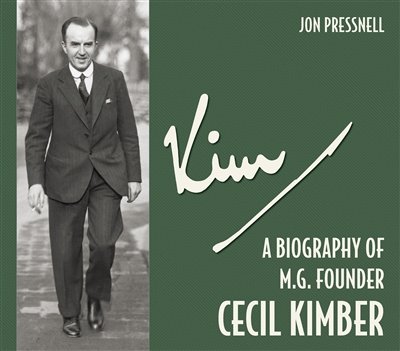
To mark the 60th anniversary of the Porsche 911, Berlin Motor Books has published the book PORSCHE 911 60 YEARS 1963-2023, limited to 911 copies.
Special features in this book
- Limited to only 911 units
- Each copy is individually numbered
- Detailed purchase advice and price trends
- Detailed presentation of all 82 Porsche 901 from 1964
- Extensive information on all 901 prototypes
- All colors of the Porsche 901 and 911 2.0 (Ur-Elfer)
- Unpublished historical visual material
The nine-eleven has been in production for over 60 years!
More than 60 years have passed since the Porsche 911 was presented at the Frankfurt Motor Show in September 1963, still as the Type 901. If things keep going this way, the Porsche 911 will surpass the 65-year production run of the VW Beetle (1938-2003). The book “Porsche 911 -60 Years” takes an in-depth look at how a small team of employees was able to create a sports car legend that is still unmatched today.
Interviews with the most important developers of the Porsche 911
All the important contemporary witnesses to the development of the 911 have their say in detailed interviews, including visionary Ferry Porsche, who came up with the only sensible concept for the successor to the 356.
And, of course, a detailed conversation with F.A. Porsche, under whose direction this century-old design in automotive engineering was created, is not to be missed.
Porsche engineering legend Hans Mezger reports on the development of the 911 engine, but Helmuth Bott, Peter Falk and Herbert Linge also provide intensive insights into the exciting period of 911 development.
All 82 Porsche 901 from 1964 are presented
In addition to interviews with contemporary witnesses, the book presents unpublished color photographs of the 901 presentation tour in 1963 and 1964. In addition, all 82 Neunelfer models that rolled off the production line as the Type 901 at the start of series production can be presented in detail for the first time.
The story of the 901 prototype quick blue is told
The book also takes an in-depth look at the first sales brochures and the color palette of the original 911. The book is rounded off by a detailed buying guide, which “Mr. 901”, Alois Ruf has created exclusively. There is probably no other expert in the world who knows more about the Porsche 901 prototypes and the very early 911s. Alois Ruf also owns the oldest Porsche 911 ever and reveals in an interview how he came to own this sensational one-off.
Oversize hardcover in slipcase
Text in English and German
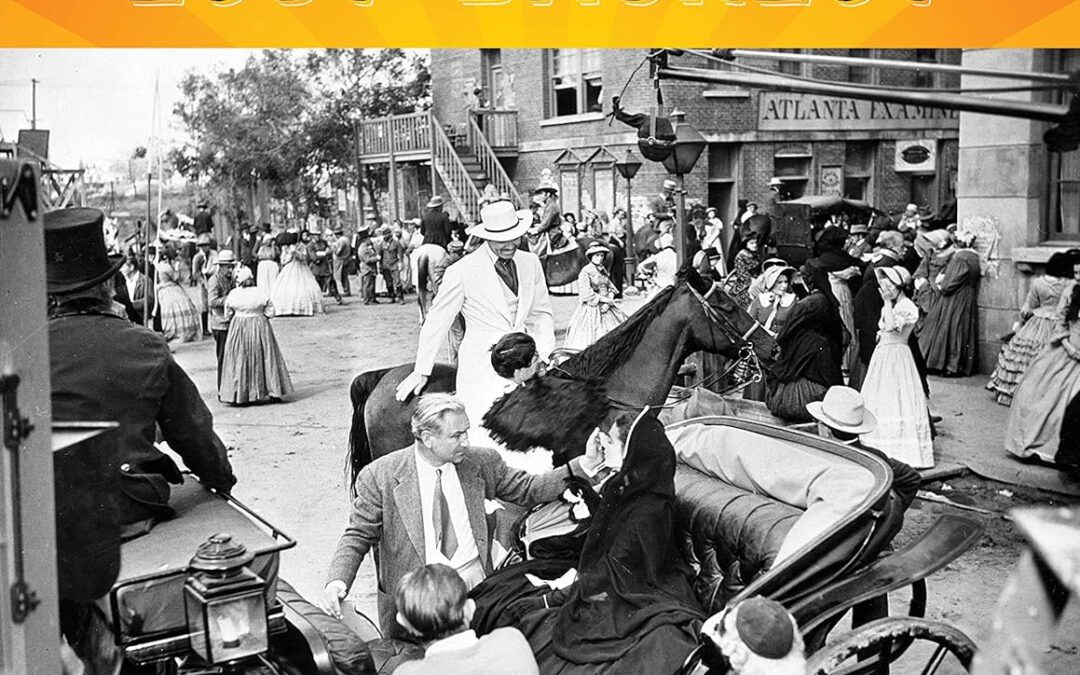
Hollywood is a transitory place. Stars and studios rise and fall. Genres and careers wax and wane. Movies and movie moguls and movie makers and movie palaces are acclaimed and patronized and loved and beloved, and then forgotten. And yet…
And yet one place in Southern California, built in the 1920s by (allegedly murdered) producer Thomas Ince, acquired by Cecil B. DeMille, now occupied by Amazon.com, has been the home for hundreds of the most iconic and legendary films and television shows in the world for a remarkable and star-studded fifty years. This bizarre, magical place was the location for Tara in Gone with The Wind, the home of King Kong and Superman, of Tarzan and Batman, of the Green Hornet, of Elliot Ness, of Barney Fife, of Tarzan, of Rebecca, of Citizen Kane, of Hogan’s Heroes and Gomer Pyle, of Lassie, of A Star is Born and Star Trek, and at least twice, of Jesus Christ. For decades, every conceivable star in Hollywood, from Clark Gable to Warren Beatty, worked and loved and gave indelible performances on the site.
And yet, today, it is completely forgotten.
Pretty much anyone alive today, from college professors to longshoremen, have probably heard of Paramount and of MGM, of Warner Bros. and of Universal, and of Disney and Fox and Columbia, but the place where many of these studio’s beloved classics were minted is today as mysterious and unknowable as the sphinx.
Hollywood’s Lost Backlot: 40 Acres of Glamour and Mystery will, for the first time ever, unwind the colorful and convoluted threads that make for the tale of one of the most influential and photographed places in the world. A place which most have visited, at least on screen, and which has contributed significantly and unexpectedly to the world’s popular culture, and yet which few people today, paradoxically, have ever heard of.

What they didn’t want you to know
“We all watched in shock and disbelief when Challenger was lost. Probably no one felt more disappointment and regret than Allan McDonald, who had warned us not to launch that day. His story tells of loss, grief, and the eventual rebuilding and recovery.”–Robert “Hoot” Gibson, former Space Shuttle pilot and commander
“A major contribution to a difficult episode in the history of human spaceflight.”–Roger D. Launius, Division of Space History, Smithsonian Institution
“McDonald tells the heartbreaking tale of how he saw his words of warning ignored, and the fateful consequences of that decision.”–Donald C. Elder III, Eastern New Mexico University
On a cold January morning in 1986, NASA launched the Space Shuttle Challenger, despite warnings against doing so by many individuals, including Allan McDonald. The fiery destruction of Challenger on live television moments after launch remains an indelible image in the nation’s collective memory.
In Truth, Lies, and O-Rings, McDonald, a skilled engineer and executive, relives the tragedy from where he stood at Launch Control Center. As he fought to draw attention to the real reasons behind the disaster, he was the only one targeted for retribution by both NASA and his employer, Morton Thiokol, Inc., makers of the shuttle’s solid rocket boosters. In this whistle-blowing yet rigorous and fair-minded book, McDonald, with the assistance of internationally distinguished aerospace historian James R. Hansen, addresses all of the factors that led to the accident, some of which were never included in NASA’s Failure Team report submitted to the Presidential Commission.
Truth, Lies, and O-Rings is the first look at the Challenger tragedy and its aftermath from someone who was on the inside, recognized the potential disaster, and tried to prevent it. It also addresses the early warnings of very severe debris issues from the first two post-Challenger flights, which ultimately resulted in the loss of Columbia some fifteen years later.
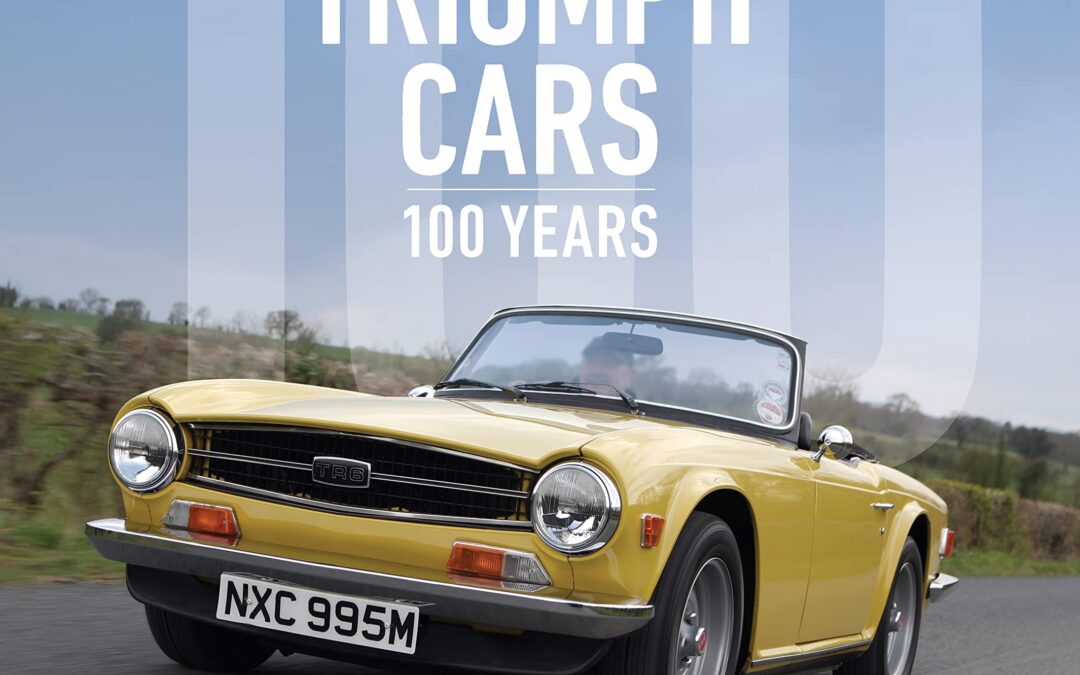
Experience the entire history of Triumph sports cars in this comprehensive volume featuring stunning studio photography, rare archival images, and period advertising.
Triumph Cars chronicles the company and its remarkable vehicles, from the first 10/20 through a string of automobiles sought after by collectors, from the early Supers and Glorias through the entire TR and Spitfire ranges, and on to the legendary GT6 and the latter-day 1300, 1500, and Dolomite sedans—filled with images, history, and in-depth analyses of players, tech, and styling.
With roots extending to a London bicycle importer established in 1885, Triumph built its first car in 1923: the Triumph 10/20. By 1930, the Triumph Cycle Co. had become Triumph Motor Company and was on its way to establishing seven decades of automotive heritage.
Author Ross Alkureishi showcases how company visionaries developed the brand—and how the brand changed hands—in the trying economic times of the 1930s and during the war years. The Standard years beginning in 1944 are also examined, along with associations with Jaguar and the range of roadsters and saloons developed, arguably peaking with the introduction of the TR2 sports car in 1953.
Alkureishi proceeds through the stylish 1950s cars and on to the Leyland years beginning in 1960, and associated engine and styling developments. The story ends with the last Triumph model, the Acclaim introduced in 1981, and the marque’s subsequent mothballing. Along the way, Alkureishi also highlights Triumph motorsport exploits, particularly in the realm of rally cars.
From the 1923 steel-paneled 10/20 through a range of roadsters, saloons, and sports cars, Triumph Cars offers a definitive review of an iconic British marque. The book is illustrated with hundreds of historic, contemporary, and racing photographs, as well as detailed text. This is the one volume no sports car enthusiast can be without.

How is the style of a car created?
How does one get to the top of the “Design” division of a major car manufacturer, a sector that is continually under “friendly fire” from the entire management staff, including presidents and CEOs, because style lends itself to diverse interpretations?
These questions are answered by Walter De Silva, a designer of indisputable fame, with top-level experience in an impressive number of brands: Fiat, Alfa Romeo, Audi, Seat, Volkswagen, Skoda, Lamborghini, Bentley and Bugatti, as well as direct contacts in Ducati and Porsche.
It’s a long story, told by De Silva himself in a brilliant and spontaneous way, and it gives the reader the impression that the author has been able to transfer his expertise in Design to paper, including feelings, pathos, moods and discontent, which characterized the genesis of the many cars that he designed.
A sensation reinforced by the publication of numerous original drawings by the author alongside the text.
De Silva’s story proceeds swiftly thanks to it being split up into episodes, many of which see as protagonists the author together with famous names of the world motoring elite, such as engineers Ghidella and Cantarella (protagonists of the complicated period experienced by the Fiat Group in the final years of the last century), Avvocato Agnelli and his brother Umberto, Sergio Marchionne and the leaders of the Volkswagen Group, where a brilliant and absolute ‘monarch’ – Professor Ferdinand Piëch, the nephew of Ferdinand Porsche – was in charge.
He was the man who “absolutely” wanted De Silva in the Group.
Of course, all the famous models of the Milanese designer, such as the Alfa Romeo Proteo and Nuvola prototypes and the 156 and 147 saloon cars, take centre stage.
The list of models studied for the VW Group is a long one; it includes the third generation Audi A6, on which the famous grille called “single frame” made its debut, with a courageous design embracing the entire front and which since then (2004) has characterized the entire production of the Ingolstadt company.
These are memories of successful times but also of struggles to assert ideas, in a true “automotive novel”, which has Design – but not only design – as its protagonist.
- 258 pages
- Colour and b/w images
- Format: cm 20×26
- Cover: hardcover with dust jacket
Language: Italian – English
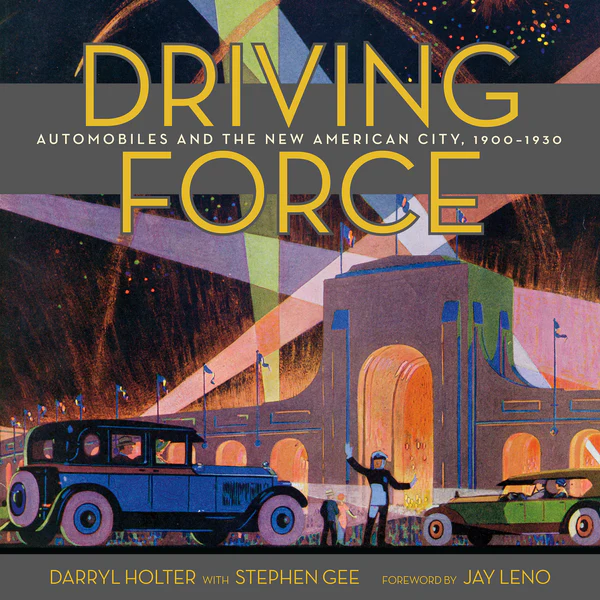
Driving Force: Automobiles and the New American City 1900-1930 (Angel City Press) explores how Los
Angeles’s enigmatic car culture propelled the explosive growth of America’s passion for cars. And with thoroughly researched text and page-after-page of vintage images, it shows how roadblocks that limited the sales of automobiles in the rest of the country, were eliminated in a new-thinking city in the earliest days of the car industry.
At the dawn of the twentieth century, as Los Angeles transformed from a rugged outpost to a booming metropolis, so too did the fledgling automobile simultaneously come of age. Ignited by an unlikely and visionary mix of entrepreneurs who ventured into unknown territory, early adopters broadened the market and convinced the public that cars were no longer a luxury—they were the ultimate modern necessity. From these early enthusiasts, men and women in various business recognized that the automobile would change society and wanted a piece of that action. The city’s auto business emerged initially among bicycle shop owners, carriage retailers, and automobile aficionados who started selling—and repairing!—cars. Their workshops thrived, expanded, and eventually became dealerships, the key component to the auto boom.
In this first major history of dealers at work—and one of the first books to chronicle the early history of cars in Los Angeles—authors Darryl Holter and Stephen Gee share the untold story of pioneering automobile dealers who seized the chance to join a start-up industry that reinvented an American city. Some became wealthy and powerful, others failed. But the lure of the automobile never wavered.
The L.A. dealers helped change the way cars were sold. They championed selling cars on credit while accepting“used cars” that buyers “traded in” so they could buy a new one. They introduced the West Coast to the concept of dealerships with service bays for on-site car repairs; persuaded manufacturers to design cars to their specifications and created custom vehicles and innovations that were copied around the country.
With more than 150 spectacular vintage images—many never before published—Driving Force brings to life the people who made the automobile an icon of the modern American city. In its pages, readers will discover how the story of the automobile is interwoven with Southern California’s unique topography and sun-drenched climate; a new era of women’s rights, and a growing female influence on automobile design; the creation of the Los Angeles Auto Show and the remarkable 1929 fire that threatened to destroy it; and how car dealers launched renowned L.A. radio and television stations, including KNX, KFI, and KCBS-KCAL.
As car collector extraordinaire Jay Leno explains in his Foreword to Driving Force, “Darryl Holter shows that auto retailers connected manufacturers to buyers, changing America and shaping the history, economy, and culture of Los Angeles.”

In this in-depth study of the 737, the renowned aviation historian and author Graham M. Simons explores the whole story of the type’s design and introduction.
The Boeing 737 is an American short- to medium-range twinjet narrow-body airliner developed and manufactured by Boeing Commercial Airplanes, a division of the Boeing Company. Originally designed as a shorter, lower-cost twin-engine airliner derived from the 707 and 727, the 737 has grown into a family of passenger models with capacities from 85 to 215 passengers, the most recent version of which, the 737 MAX, has become embroiled in a worldwide controversy.
Initially envisioned in 1964, the first 737-100 made its first flight in April 1967 and entered airline service in February 1968 with Lufthansa. The 737 series went on to become one of the highest-selling commercial jetliners in history and has been in production in its core form since 1967; the 10,000th example was rolled out on 13 March 2018.
There is, however, a very different side to the convoluted story of the 737’s development, one that demonstrates a transition of power from a primarily engineering structure to one of accountancy, number-driven powerbase that saw corners cut, and the previous extremely high safety methodology compromised. The result was the 737 MAX. Having entered service in 2017, this model was grounded worldwide in March 2019 following two devastating crashes.
In this revealing insight into the Boeing 737, the renowned aviation historian Graham M. Simons examines its design, development and service over the decades since 1967. He also explores the darker side of the 737’s history, laying bare the politics, power-struggles, changes of management ideology and battles with Airbus that culminated in the 737 MAX debacle that has threatened Boeing’s very survival.

Explore the thrilling illustrated story of NASCAR stock car racing in America with this stunning celebration filled with evocative photography, legendary drivers, and a decade-by-decade history.
NASCAR 75 Years captures the greatest moments throughout the decades: from the beaches of Daytona to the jaw-clenching competition, the mind-bending technology, the triumphs, the teamwork, and the high-speed thrills. Large-format photography from throughout NASCAR history brings it all to life alongside narratives written by a roster of veteran NASCAR reporters and historians.
Follow NASCAR’s growth from a small, innovative family business to a leader in sports entertainment, witnessed each week by millions in person and on national television. The authors show the evolution of the vehicles—from modified family sedans to 700-horsepower race-built behemoths, all the way through the “Next Gen” cars that debuted in 2022—and celebrate the drivers who have piloted them around tracks like Daytona, Talladega, Darlington, Las Vegas, and more —legendary heroes with names including Flock, Weatherly, Petty, Allison, Yarborough, Earnhardt, Waltrip, Gordon, Stewart, Johnson, Busch, all battling wheel to wheel, week after week, across the United States.
This beautifully designed and extensively illustrated book provides the ultimate history of the legendary series, celebrating the drivers, crew chiefs, pit crews, owners, and tracks, from the earliest days on Florida’s beaches right through to today’s superspeedways, short tracks, and road courses. Compiled by authors with a passion for motorsport, NASCAR 75 Years is a volume no fan can be without.

Install and modify your truck bed floor with guidance from certified auto-body repairman and television personality Kevin Tetz.
A simple internet search of the words “truck bed floor” provides almost a hundred million results. The possibilities are limitless for personalizing your hauler for work or play. The bed floor shows the heart and soul of a vintage truck, and with several new generations of pickups being deemed “classic,” it’s no surprise that the bed is a popular subject.
The functionality of a truck bed can be traced back to the days of horse-drawn vehicles. As the purpose of some truck beds has changed from their utility to being an accessory, personalizing and customizing them is now an industry standard.
Even with the most basic skills, you can be confident that you can pull off an excellent restoration or replacement of a bed floor with the simplest of hand tools. Taking ownership of a do-it-yourself project provides an immense sense of pride in the accomplishment, so whether your truck is brand new or 100 years old, this book walks you through how to restore, decorate, replace, customize, patina, or upgrade your bed floor.
Truck Beds: How to Install, Restore & Modify was written to provide professional results while catering towards your skill set, budget, and experience.
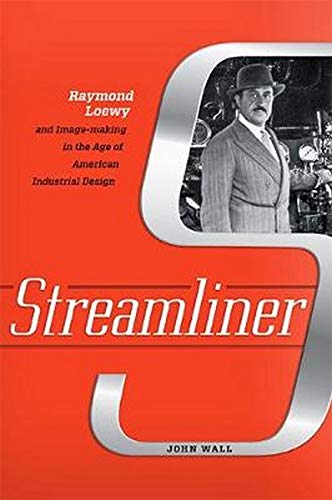
The true story of Raymond Loewy, whose designs are still celebrated for their unerring ability to advance American consumer taste.
Born in Paris in 1893 and trained as an engineer, Raymond Loewy revolutionized twentieth-century American industrial design. Combining salesmanship and media savvy, he created bright, smooth, and colorful logos for major corporations that included Greyhound, Exxon, and Nabisco. His designs for Studebaker automobiles, Sears Coldspot refrigerators, Lucky Strike cigarette packs, and Pennsylvania Railroad locomotives are iconic. Beyond his timeless designs, Loewy carefully built an international reputation through the assiduous courting of journalists and tastemakers to become the face of both a new profession and a consumer-driven vision of the American dream.
In Streamliner, John Wall traces the evolution of an industry through the lens of Loewy’s eclectic life, distinctive work, and invented persona. How, he asks, did Loewy build a business while transforming himself into a national brand a half century before “branding” became relevant? Placing Loewy in context with the emerging consumer culture of the latter half of the twentieth century, Wall explores how his approach to business complemented―or differed from―that of his well-known contemporaries, including industrial designers Henry Dreyfuss, Walter Teague, and Norman Bel Geddes. Wall also reveals how Loewy tailored his lifestyle to cement the image of “designer” in the public imagination and why the self-promotion that drove Loewy to the top of his profession began to work against him at the end of his career. Streamliner is an important and engaging work on one of the longest-lived careers in industrial design.

Celebrate more than 100 years of Germany’s best two- and four-wheeled rides. This handsome volume is filled with images, history, and in-depth review of the incredible machines BMW has created year after year.
Established in 1916, BMW is one of the automotive and motorcycle industry’s oldest and most-respected manufacturers. Over the past 100-plus years, the company has passed through myriad incarnations. The BMW Century chronicles this remarkable transportation story through the cars and motorcycles manufactured, from the 1923 R32 motorcycle to today’s sleek electric, hybrid, and high-performance cars.
The BMW Century showcases how the company’s visionary team systematically rebuilt BMW in the post-World War II years into the spectacular success we know today—a company with sales in excess of two million cars annually, led by its top-selling 3-series.
BMW’s motorcycle division is no less legendary. It began with the 1923 avant-garde R32, which featured a 180-degree, horizontally opposed twin, the engine configuration that would become BMW’s hallmark. Over the decades, BMW used that configuration to power groundbreaking machines like the R90S, R100RS, and R80GS. Beginning in 1983, the company added add three- and four-cylinder machines to their offerings, culminating in today’s spectacular S1000RR sport bike.
From the pre-war motorcycles to the iconic R-series twins of the 1970s and ’80s to the mighty M-cars and superbikes of today, The BMW Century offers a full review of German engineering at its zenith. The book is illustrated generously with hundreds of historic, contemporary, and racing photographs—many sourced from BMW’s historic archives—and thorough text covering BMW’s full history.
This is the one volume no BMW aficionado will want to be without.

Hard facts, soft skills: technical data, casually recounted anecdotes, and plenty of interesting lifestyle information
• On track and on the screen: the successes of the 300 SL in racing and its many appearances in the movies and on television
• A must-have for all gullwing fans
In 1954, the Mercedes-Benz 300 SL was unveiled at the International Motor Sports Show in New York — the start of an unparalleled success story. Victories in the 24-hour race at Le Mans and the Carrera Panamericana made it world-famous. It also possessed groundbreaking technology, including the first series-production fuel-injected engine. Its elegant shape and futuristic gullwing doors made it a coveted prize, symbolizing exclusivity and freedom. This volume has everything that is important about the legendary sports car: wonderfully aesthetic automotive photography by René Staud and archive pictures rich in patina, snapshots of racing successes and famous owners, and interesting facts from the model’s history to the colors of the paintwork.

• The ultimate insider’s guide to the VW Bus
• Features interesting and unusual stories about the popular car model
• Fully illustrated with 111 full-page color photographs
The VW Bus is not just a car. It is sentimental, a part of the family. A way of life on wheels. That’s why most of them have names. And almost everyone has some sort of connection to the VW Bus. This book offers fascinating stories about one of the most popular automobiles of all time and the most successful camper van in the world – a kaleidoscope from the world of VW Buses. In 111 chapters, you will learn interesting, funny, surprising and emotional things about a vehicle that was originally intended as a simple delivery van and then made history as a multifunctional vehicle concept. Author Christian Schlueter, himself a passionate fan of the car, tells endearing, detailed and exciting stories about these legendary vans. He presents models with their production history and special features, introduces visionaries and gives an insight into the car industry. He reports on world records and adventure trips, as well as freedom and nostalgia. A wonderful compendium with photos about the world’s fascination with the VW Bus – a must for every fan and lover of this cult car.
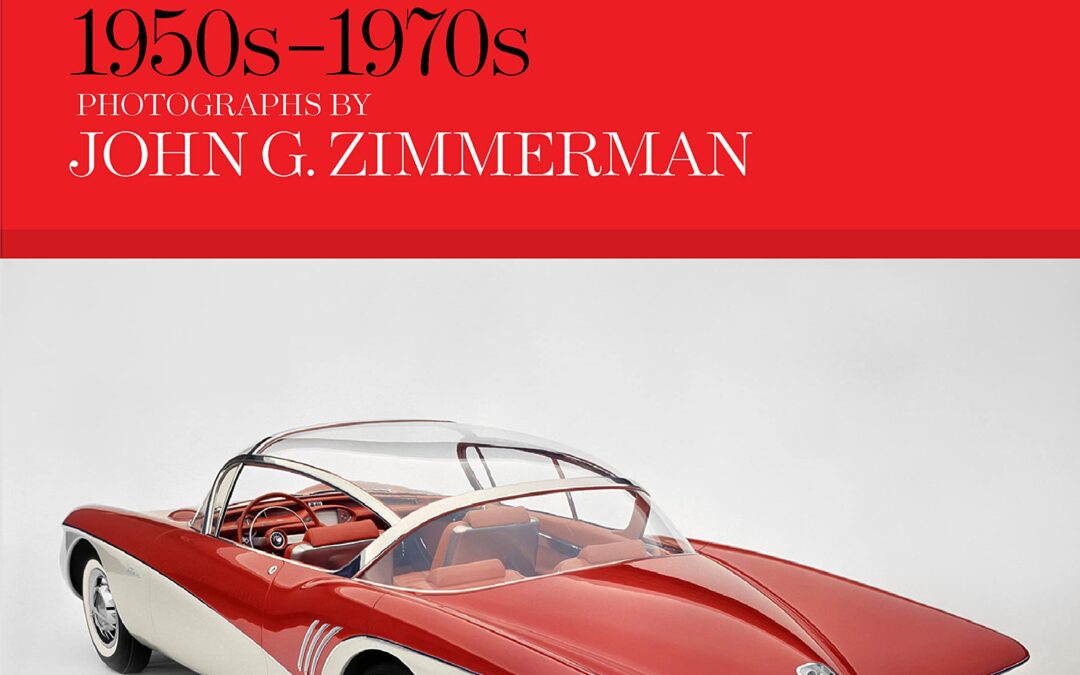
A glorious and nostalgic celebration of a defining period in American car culture—the 1950s to the 1970s, the golden age of Detroit’s icons of the road—when automobile design was at its peak and the car itself was synonymous with a vision of success in America.
Auto America offers a compelling look at three decades (the 1950s, ’60s, and ’70s) of America’s fascination with the automobile. At a time when self-driving vehicles and climate change are transforming driving around the world, John G. Zimmerman’s pictures capture the optimism and even utopianism of a beloved period in American car culture.
Many of Zimmerman’s photographs were originally taken for Life, Time, and Sports Illustrated magazines and highlight diverse aspects of America’s auto industry at its zenith; they feature not only iconic cars of the era, which Zimmerman chronicled comprehensively at car shows and in studio assignments throughout the period, but also a behind-the-scenes look at the people who designed, built, collected, exhibited, and raced them.
With more than 200 photographs and drawing on the John G. Zimmerman Archive’s collection—including his best-known photographs of Fords, Chryslers, and GMs in their heyday alongside ephemera, tear sheets, and outtakes from his assignments—the book celebrates the automobile’s central place in American culture during those decades when the timeless silhouettes of classic cars ruled the roads.
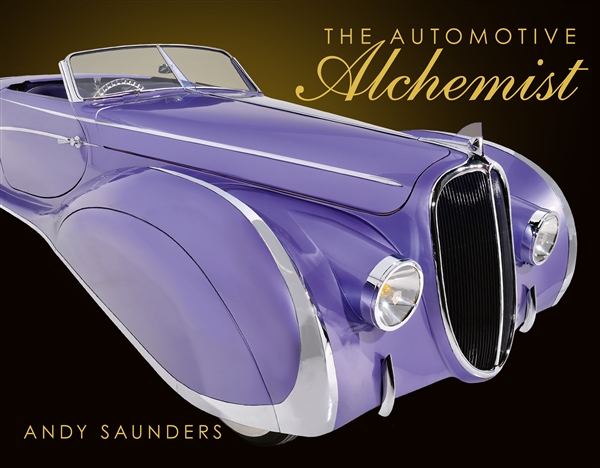
Andy Saunders’ ‘Automotive Alchemist ’ is a roller-coaster ride through the highs and lows of this charismatic man’s life. From the early years of learning the basic skills of cutting and shaping metal then painting and airbrushing, to his mature creations, restorations and the inherent genius of his designs. Andy welcomes us into his workshop and his head: not afraid to express his emotions, as he deconstructs and then rebuilds each vehicle, he lays bare his motivations, inspirations, influences, and passions. Intertwined in the narrative is the work involved in the creation of 60 cars, described here with many detailed photographs.
Forty-two of Andy’s creations now reside in museums and private collections across the globe but the most unusual fate is that of Flat Out, the Guinness Book of Records acclaimed Lowest Car in the World, which is now a coffee table in the foyer of a huge Californian corporation.
The book is not a technical ‘how to create wild custom cars’ manual. Rather it is a celebration of Andy’s joy of creation and his design genius, though tempered by personal traumas and losses. He has, on many occasions, been referred to as the British George Barris, the American “King of Kustomizers.” Unlike many biographies, this book engages the reader with its honesty and humour.
Andy Saunders grew up in Poole on the south coast of England and developed an early relationship with the building and customising of cars. His first project was finished before he was old enough to hold a British driving license.
Since that first project, his journey to become Britain’s leading and most recognisable ‘Car Artist’ has evolved. With his painstaking attention to detail and his knowledge of the styling masters from bygone eras, his creations have always been unique and, occasionally, controversial.
Never shy of turning his ideas into reality or taking unexpected opportunities to fruition, Andy has, on occasions, thrown away the accepted rule book and created some truly amazing vehicles: making a Citroën CX into a road-legal alien craft; turning Ford’s 1958 X-2000 ‘car of the future’ model into a full-sized reality and creating a Cord coupe that the factory would have been proud to call their own.
Andy has three Guinness Book of Records certifications: twice for the ‘lowest car in the world’ and once for the ‘lowest van in the world’ which remains unbeaten and has been approached by film companies and undertaken commissions for major car manufacturers. But mostly he builds whatever has inspired his creative juices from lowriders, Incantation, to shortened Minis, Mini Ha Ha; from restyling a Bentley Mulsanne, which was acclaimed by the Rolls-Royce and Bentley Owners Club as “the most beautiful coachbuilt Bentley to have been built since WWII”, to a 2CV inspired by Picasso – Picasso’s Citroën; and from his drivable version of Bertone’s Lancia Stratos Zero to his Art Deco creation of a rare 1939 Peugeot, Metropolis, inspired by Fritz Lang’s 1927 masterpiece of the same name.
During the past four decades Andy has restored Cord, Pontiac and Rolls Royce vehicles. Rescued and restored the unique and much-maligned 1957 Aurora Safety Sedan and realised an affinity with the great designer Alex Tremulis. Andy’s creations have appeared in exhibitions, on television and in magazines as far afield as Australia, Korea, America, the UK and Europe and many of his vehicles nowadays reside in museums and collections from California to Japan and from Europe to the Middle East.
And so to his latest masterpiece, Déjà: inspired by a 1930’s popular French girls name, some body panels he didn’t want or need and the pinnacle of French coachbuilding, Andy has created this Delahaye, a hand-built steel roadster. This beautiful cross between Joseph Figoni’s 165s and Jacques Saoutchik’s 175 somehow appears to be some eighty-five years late for her debut at the Paris Salon de l’Automobile.
- 464 pages
- Hard cover with dust jacket

The high-octane, Seabiscuit-meets-Scarface story of how Randy Lanier became a 1980s international sports star, soaring through the ranks of car racing while holding a dark secret: he was also one of the biggest pot smugglers in American history
As a kid, Randy Lanier dreamed of achieving four-wheel glory at the Indianapolis 500, but knew he’d never be able to afford the most expensive sport on earth. That all changed when he bought a speedboat and began smuggling pot from the Bahamas. Fueled by what would become a historically massive smuggling operation, he started racing cars and became an overnight sensation. For Randy and his teammates, money was no object, and bigger hauls meant faster cars. At every event they attended, they were behind the wheel of the best machinery, flaunting their secret in front of huge crowds and live television cameras. But no matter how fast they drove, they couldn’t outrun the law. As Randy came ever closer to reaching his dream of high-speed glory, one of the biggest drug scandals ever to hit the professional sports world was about to unfold.
Set in the 1980s Florida of Miami Vice, this is the unbelievable, unforgettable, unparalleled story of an ordinary guy whose attempts to become famous doing the thing he wanted most—become a world class race car driver—devolved into a you-can’t-make-this-up tale of one of the biggest crime rings and drug scandals of the 1980s. Now, with the help of New York Times bestselling author A.J. Baime, Randy tells the whole truth for the first time ever, a gripping narrative unlike any other, a sports story for the ages, and shocking a true crime epic.
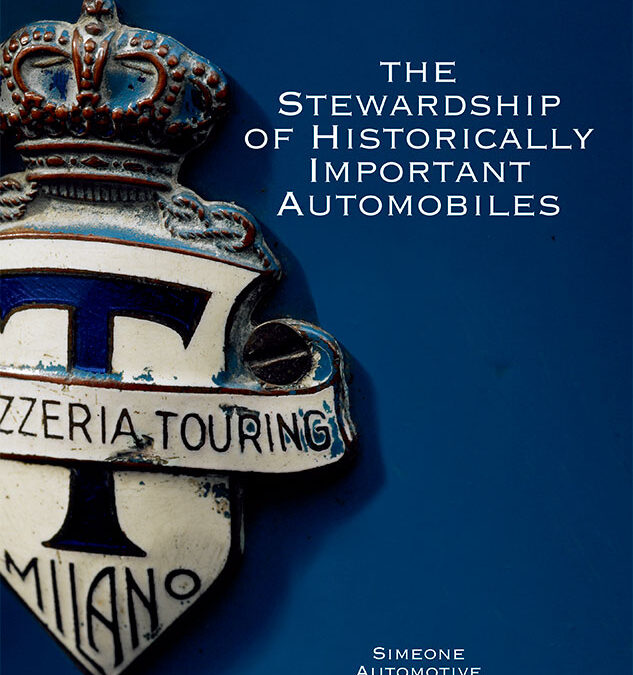
The idea of stewardship – the ownership of a historical automobile during one’s lifetime – has recently gained the focus that it has always deserved.
This selfless consideration of preserving the original machines is presented by the foremost authors, museum directors and collectors of our time, led by the visionary Miles Collier and Fred Simeone. These world renowned automotive academicians are joined by Ed Gilbertson, Evan Ide, Leigh Keno and Leslie Keno, L. Scott George, Mark Gessler and others whose unique viewpoints spell out the need for proper preservation of our automotive treasures.
Illustrated with almost 200 historic photographs, documents and modern imagery, this book explores many of the issues associated with the ownership of historically important automobiles. Topics include: provenance; patina and false patination; reversible restoration; over-restoration; dealing with older restorations, the definition of a historically important automobile, and many other thought provoking issues.
This book will certainly encourage serious conversation on this controversial subject, and is a must for any sincere collector of automobiles.
The Stewardship of Historically Important Automobiles achieved the distinction of “Publication of the Year” at the International Historic Motoring Awards in London, November 2013.
Dr. Fred Simeone passed away in June, just a few days after his 86th birthday. His legacy is presented in this re-release of this important book, available in this memorial edition.
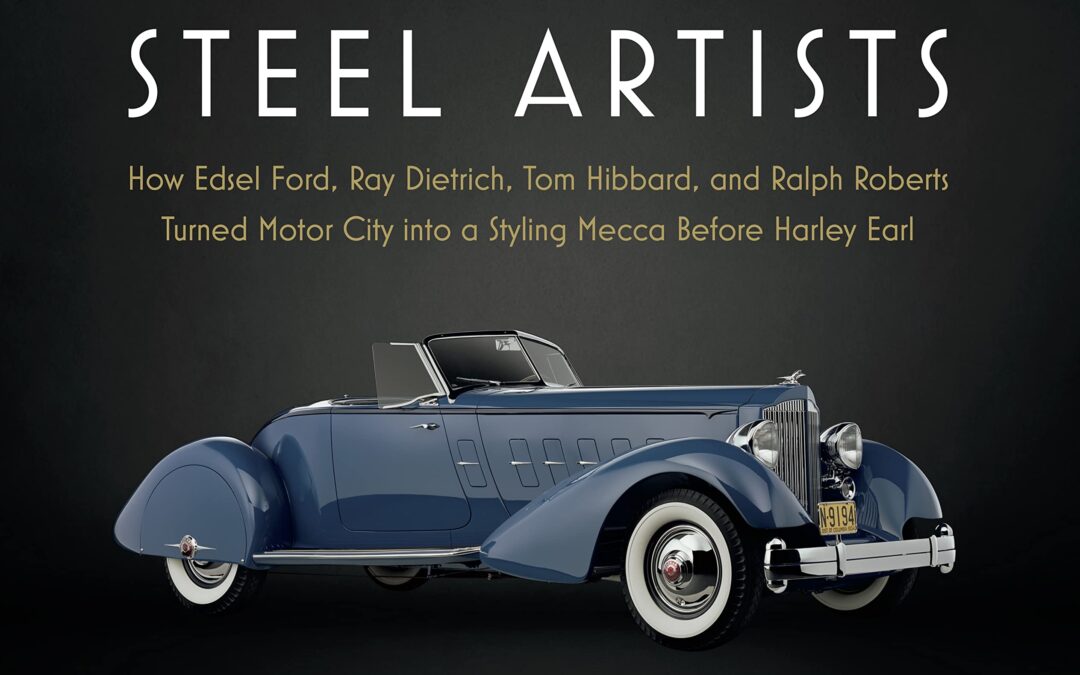
A groundbreaking book on how automotive styling was born, the artists who made it happen, and how Motor City was changed forever.
Printed in a large 12″ x 12″ format with 296 hardbound pages, Detroit Steel Artists is the first comprehensive story about the avant-garde artists of the automotive business—the industries’ outcasts who changed Motor City forever and made styling an important selling point in the early 1920s.
Styling is a given today for selling cars. How did that come to be? Societal changes, including the modernization of business and the women’s movement, were powerful factors for styling’s rise in significance. The forward-looking semi-custom car designs, from companies such as Le Baron and Dietrich, became a key strategy for styling’s acceptance in Detroit for production cars—before Harley Earl.
Inspired by Edsel Ford’s vision, Ray Dietrich, Tom Hibbard, and Ralph Roberts battled with engineers and executives in drafting rooms and board rooms over design. Packed with lively first-person stories supported by extensive research, Detroit Steel Artists relates the successes and failures of these fascinating pioneering steel artists. With more than a hundred period and modern images, Detroit Steel Artists takes readers on a panoramic tour of some of the most beautiful cars of the Classic Car Era—the zenith of automotive design.




